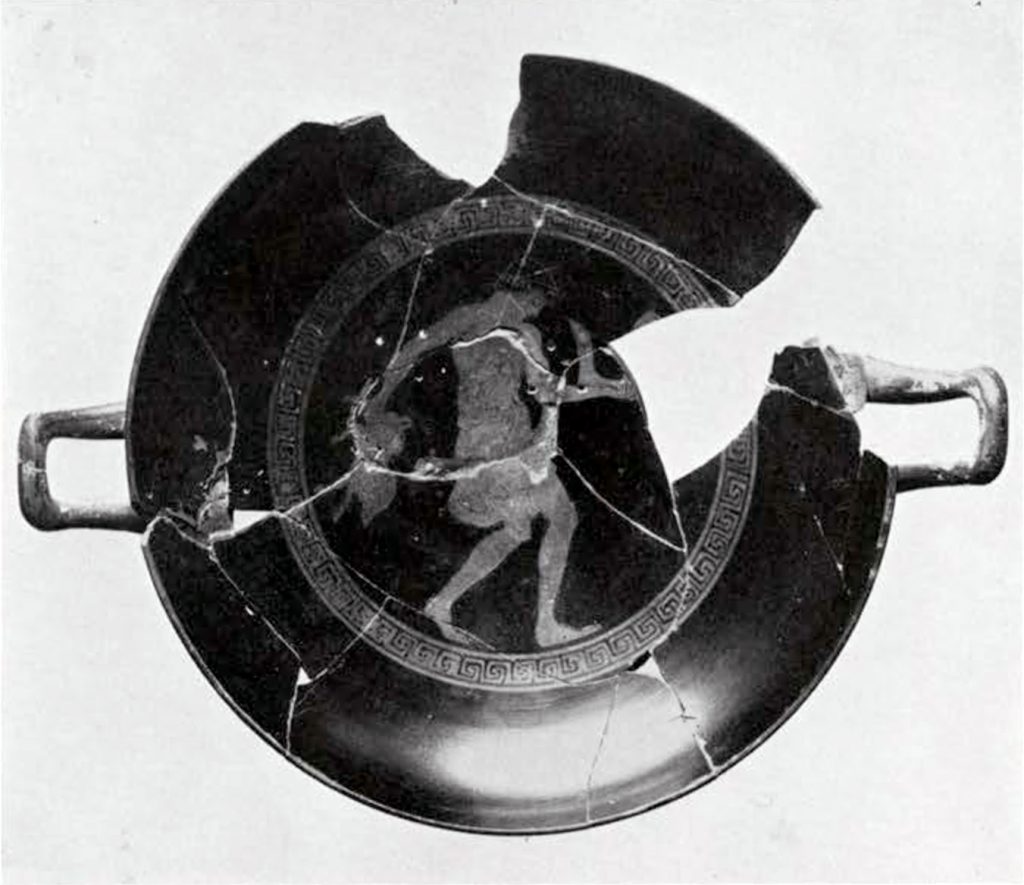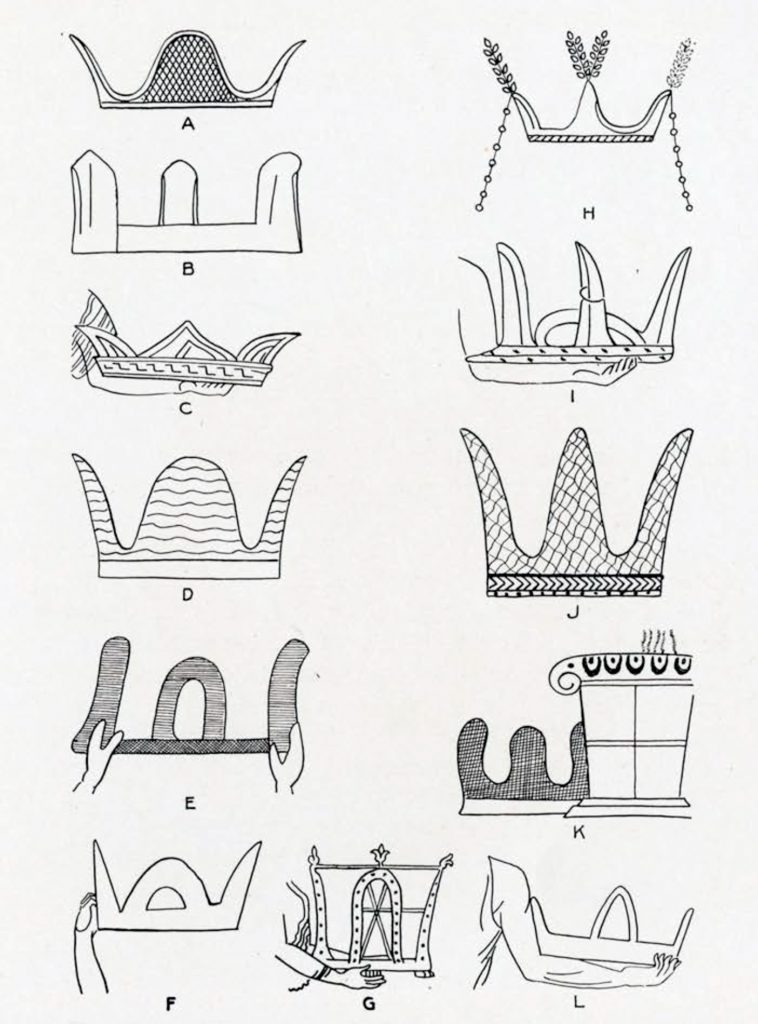Among the objects which have been cleaned during the summer of 1913 and from which modern restorations have been removed is the red-figured kylix shown in Fig. 140, decorated with a picture of a boy about to sacrifice a pig. Attention has already been called to this example of Greek vase-painting. The removal of restorations has, however, altered the appearance of the drawing on the inner surface. For this reason a photograph of the kylix in its present condition is reproduced in the JOURNAL. It will be seen from this photograph that the remaining lines of the ceremonial object held in the boy’s left hand now suggest those of the usual three-pointed device of unknown purpose so frequently found on Greek vases portraying scenes of sacrifice. Examples of this object from other vases are shown in Fig. 141 for purposes of comparison. A special study of these objects of ritual is shortly to be published by the writer.
E. H. H.

Museum Object Number: MS2448
Image Number: 2867


